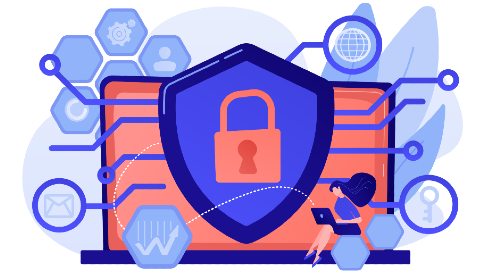The Power of Personalization in Marketing: How to Tailor Your Message for Maximum Impact
Imagine entering a store where every product on display feels like it was chosen just for you. The colors, the layout, and the music playing all resonate with your taste. Now, think of your marketing in the same way. Personalization is the magic that turns a generic pitch into a meaningful conversation, where every message feels like it was crafted with one person in mind: your customer! Let’s see how personalization in marketing can help you stand out and cut through the noise in a world of information.
The Psychology Behind Personalization
Personalization in marketing is much more than using the customer’s first name in your email; even that is an excellent way to start your journey. Personalization is there to turn your marketing strategy from a one-size-fits-all approach into a meaningful dialogue. Personalization on a deeper level means tailoring your messages, offers, and experiences to individual customers based on massive data you collect on their preferences, behaviors, and needs.
The psychology behind personalization in marketing taps into creating that emotional connection that feels more relatable than a mere transaction. People, or your customers, want to feel seen and understood, so creating personalized messages for each is the way to their minds and hearts.
Think about it: when you receive a message that speaks directly to your needs, you are more likely to pay attention. This is because even if you know the content is for marketing purposes it resonates with you and triggers an emotional response that generic messages simply can’t. If marketing is based on standing out, then personalization is its perfect partner. Our brains are wired to filter out irrelevant information, but when something aligns with our interests or concerns, it stands out.
Critical Strategies for Effective Personalization
Once we know and understand the psychology behind personalization, we can move on to key strategies to boost engagement and loyalty. Here are the steps you need to take to make your message stand out:
#1 Data Collection and Analysis
To personalize effectively, you need to collect and analyze the correct data. This massive data collection will include demographic information, browsing behavior, purchase history, and social media interactions. The idea is to collect as much information as possible to understand your customers more deeply. However, remember that this data collection needs to be ethical, meaning you must be transparent about it and respect the client’s privacy.
#2 Segmentation
Once you have all the data, your next assignment is to segment it. Segmentation might sound complicated, but it simply means dividing your audience into distinct groups based on shared characteristics, such as interests, purchasing habits, or demographics.
By creating these groups, you can craft a more targeted message that will resonate with your audience. At the same time, you will work more efficiently by targeting similar people with the same message while maintaining an authentic tone.
#3 Dynamic Content Creation
When you have the data and your segmented audience, you need to create dynamic content that changes based on the user’s information. For example, an email might feature different product recommendations depending on the subscriber’s past purchases. You can also offer a personalized experience on your website and display content that best suits visitors’ needs.
#4 Personalization at Scale
Scaling personalization and growing your brand can be challenging, but you can realize this goal with the right tools. Consider AI, automation technologies, and QR code generators to deliver a personalized experience even if you have a large audience.
For example, you can use a QR code tool to create unique, dynamic QR codes that lead customers to personalized landing pages or offers based on their past interactions. These tools can automatically adjust content, offers, and even messages for each person, ensuring your message is consistent and impactful even as your audience grows.
Channels for Delivering Personalized Messages
Delivering that personalized message is your next step, but choose the proper channels to promote your agenda. Each channel we’ll mention offers a unique opportunity to connect with your audience in relevant and tailored ways.
Email Marketing
Start with email marketing, as it’s still one of the most powerful channels for personalized communication. With the correct data (which you collected earlier), you can create emails that speak directly to each subscriber and go beyond mentioning their name in the first sentence.
For example, if you are marketing B2B solutions that offer employee timesheet templates, you can tailor your emails to address specific pain points related to time tracking and efficiency. Depending on your segmentation, you can mention that your timesheet templates are for individual or multiple employees and add personalized subject lines to make every email feel uniquely relevant.
Social Media
Social media platforms like Instagram, TikTok, and Facebook are perfect for real-time, personalized engagement. There are a few ways you can go about this strategy:
- Targeted ads — Paid promotions that allow you to use algorithms and connect with specific audience segments based on what they care about or how they behave online.
- Personalized posts — You can create direct messages or carefully tailored content in the audience’s feeds to deepen your connection with followers.
Website Experience
Your website is one of the most important touchpoints for your customers and an excellent opportunity for a personal marketing touch.
By analyzing and using information on visitor behavior and preferences, you can create a browsing journey that feels intuitive and personalized. Imagine a visitor returning to your website and instantly seeing content or products that align with their interests—whether a special offer on a previously viewed item or a new blog post on a topic they explored before.
You can add a few interactive elements, such as quizzes or guided shopping tools, for additional engagement and reach. These simple features make every website visitor feel like you speak directly to their needs and preferences.
Measuring the Impact of Personalized Marketing
To fully use the potential of personalization in marketing, you need to track the relevant metrics and see how well your efforts resonate with your audience. Here are a few important metrics to keep an eye on:
Conversion Rates
One of the most telling indicators of success is your conversion rate. Are personalized emails, ads, and your website leading to more sales, sign-ups, or other actions? If yes, you boosted conversions and most likely hit the mark with your tailored approach.

Source: McKinsey & Company, Website Builder Expert
Engagement Metrics
The next thing you want to see is higher engagement rates or how the audience interacts with your content. Are they spending more time on your site, clicking through emails, or engaging with your social media posts in comments and shares? If the engagement levels are high, your personalized approach captures the right people’s attention.
Customer Retention
While previous metrics are more about finding new clients, you must also consider your loyal customers. This means you need to track the customer retention rates as well. If your personal touch in marketing messages creates a loyal fanbase, you are on the right track to success.
A/B Testing Results
Use A/B testing to compare personalized and non-personalized versions of your content. This will help you see what works better for your audience and even allow you to fine-tune your personalization.
Customer Feedback
Finally, take a moment to listen to your customers actively. You can get their opinion via surveys, reviews, or direct communication. Positive comments about the relevance of your messages can validate your approach, while constructive criticism can guide you to make more improvements.
Final Thoughts on Personalization in Marketing
Always remember that your customers are constantly bombarded with messages, so if you want to stand out and make your brand memorable, you need to build genuine connections. One of the best ways to do so, backed up by human psychology, is to personalize your marketing strategies. By using the correct data, understanding your customer’s needs, and delivering tailored content through various channels, you aim to create a dialogue with your customers. This personalized, one-on-one approach will boost engagement and loyalty and deliver measurable sales results.




Leave a Reply